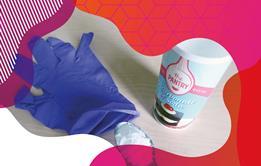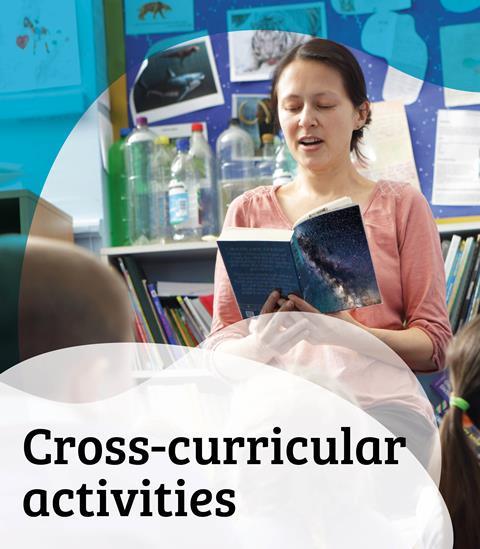Take your learners’ understanding of forces further with this simple investigation exploring air pressure and gravity
This resource is also available in Welsh and Irish
Get the Welsh language version.
Get the Irish language version.
This experiment focuses on how air pressure can overcome gravity. First watch the ‘anti-gravity bottle’ demonstration video, then find out how your learners can investigate air pressure using cups, water and cardboard.
Learning objectives
- To understand that we notice the force of air when it moves objects, but particles of air are moving all the time and create forces that we usually don’t notice.
- To appreciate that air creates a force and this force acts in all directions, not just ‘downward’ towards Earth.
- To learn that when we consider force of air over a specific area, we call this air pressure.
- To understand that air pressure of a sufficient magnitude acting upwards on an object can overcome the effects of gravity.
Enquiry skills:
- Making predictions, observations and comparisons.
Watch the video
The video below shows how to carry out the ‘anti-gravity bottle’ demonstration.
Download the supporting materials
Set up and run the investigation with your class using the teacher notes and classroom slides, featuring a full equipment list, method, key words and definitions, questions for learners, FAQs and more.
Teacher notes
Classroom slides
What do learners need to know first?
Learners should be able to articulate that a force is a push or pull which acts on objects. They should also be familiar with gravity being a type of force that pulls objects towards the Earth.
Learners should be aware of what ‘area’ means (a measure of surface covered), particularly in relation to rectangles and squares.
Equipment list
- A drinking glass or tumbler – this can be made of a hard plastic but not one which will ‘crush’ in the hand
- A flat piece of card that will fit over, and extend beyond, the opening of the glass
- Water to fill the glass
- A deep sided tray or basin to catch spillages
Additional resources
- Investigate air pressure further in our leaky bottle investigation or sticky cups investigation.
- Read up on solids, liquids and gases in this That’s Chemistry! textbook chapter.
- Introduce your learners to solids, liquids and gases with our primary science podcast.
Downloads
Anti-gravity bottle: teacher notes
Editable handout | Word, Size 4.34 mbAnti-gravity bottle: teacher notes
Handout | PDF, Size 0.34 mbAnti-gravity bottle: classroom slides
Presentation | PowerPoint, Size 11.13 mbAnti-gravity bottle: classroom slides
Presentation | PDF, Size 3.75 mb
Additional information
Primary science investigations were developed in collaboration with the Primary Science Teaching Trust

Primary science investigations

Exciting, simple experiments to engage learners with key topics in primary science, featuring classroom slides, teaching notes and video demonstrations. Links to the resources in English, Welsh and Irish.
- 1
 Currently
reading
Currently
reading
Air pressure and the antigravity bottle
- 3
- 4
- 5
- 6
- 7
- 8
- 9
- 10
- 11
- 12





































No comments yet